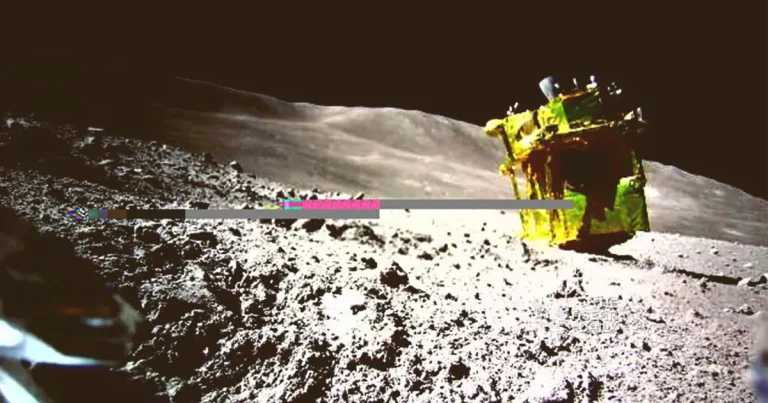27-1-2024 (TOKYO) NASA unveiled captivating images on Friday, captured by its Lunar Reconnaissance Orbiter, showcasing Japan’s Smart Lander for Investigating Moon (SLIM) on the lunar surface. The successful pinpoint landing marked Japan’s entry as the fifth country to achieve such a feat, following the footsteps of the former Soviet Union, the United States, China, and India.
The images, taken from an altitude of approximately 80 kilometres, depict a subtle change in reflectance around the lander. NASA attributed this change to the engine exhaust sweeping the surface during the landing process.
Japan’s mission, led by the Japan Aerospace Exploration Agency (JAXA), aimed to land the explorer with unparalleled precision. SLIM accomplished this objective, touching down just 55 metres away from its intended target site within the “Sea of Nectar” region near the Shioli crater.
However, following the successful landing, SLIM encountered an unexpected setback. Its orientation was off, rendering its built-in solar power panels unable to generate sufficient power as they were not properly facing the Sun. JAXA suspects that one of the two main engines lost thrust at an altitude of 50 metres above the lunar surface, leading to the misalignment.
JAXA remains optimistic, stating that once the west side of the Moon becomes exposed to sunlight, power generation should commence. Despite the orientation issue, SLIM successfully deployed a small robot called SORA-Q just before landing. On Thursday, JAXA confirmed that SORA-Q captured an image of SLIM tilting over on the Moon’s surface, further documenting the mission’s progress.
This landmark achievement by Japan in lunar exploration highlights the country’s commitment to advancing space research and joining the ranks of leading nations in space exploration. The successful touchdown of SLIM reinforces the importance of precision and technological innovation in future space missions.




